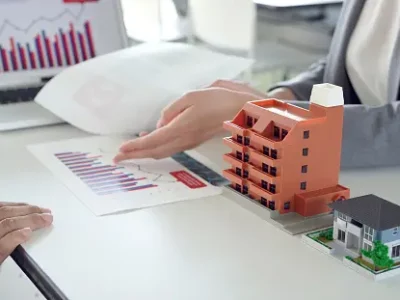Introduction to Risk Assessment and Commercial Property Insurance
So, what’s the scoop on Risk Assessment and Commercial Property Insurance? Well, it’s plain as day that in the complex world of commercial properties, a boatload of risks are hiding in every nook and corner. There’s no ‘one-size-fits-all’ in risk management – every property is unique and comes with its bag of exposure. With this in mind, property owners are facing the daunting task of identifying these potential hazards, and that’s where risk assessment comes into play. Business operations could hit a snag without a good risk assessment, jeopardizing not only the property but the business income. An effective risk management program is your shield against property damage, while foreseeing potential losses and helping prevent any business interruption that comes knocking at your door. It’s a strategy that rests on trust and good insight, defending against those wee beasties that could disrupt your business and cause a loss. Hold onto your hats, folks! Getting a grasp on commercial property insurance can seem like trying to catch a greased pig. The premium can be a pretty penny, complex, and depends on the size, construction, location, and occupancy of the building. With the facility potentially facing hazards like earthquakes and other natural catastrophes, the rate for coverage can skyrocket. Now, even if you’re insured, there’s no time for sitting on your laurels, because you need to ensure that the insurer’s inspection ticks off all the requirements. Can’t afford to play fast and loose with this one!
- The policy should cover not only building damage but also possible disruption in business and equipment breakdown.
- The business interruption component is essential for lost sales.
- It’s crucial to negotiate the total cost of insurance to prevent any increase in expense. Remember, your bottom line is at stake here!
- Consult with a seasoned CPCU or agent to assist in providing the best solution – it’s all about ensuring that you’ve got everything under control, mate! In the final analysis, the naming of the game in commercial property risk management is understanding your risk profile and properly managing it, even when the going gets tough. This will often depend on the effectiveness of your chosen insurer and the adjustment of coverage they offer with their risk management service, all while trying to keep the percentage of potential loss to the bare minimum. Remember, properly handling potential risk can mean the difference between smooth sailing and a sinking ship. Don’t mess about – make sure any decisions made are the right ones for you!
Understanding the Concept of Risk in Commercial Properties
Let’s face it, pal, the world of commercial properties can pretty darn feel like navigating through a minefield sometimes- it’s not all roses and rainbows. Wait a second, let’s backtrack and get down to the nitty gritty: one buzzword you’re bound to trip over is “risk”. But don’t fret, by the time you’re done reading this article, you’ll have a firm handle on the matter. In the realm of commercial real estate, risk isn’t just about the possibility of property loss, it’s also about understanding how such losses could affect the gritty wheels of your business. We’re talking about loss control and loss prevention, folks, the real nuts and bolts of the biz! From servicing departments grappling with property exposures, to sales teams hustling to meet their targets whilst dodging hazardous scenarios, risks are deeply woven into the fabric of every commercial property venture. Now then, let’s put this into frame, shall we? Every building, be it a modern glass edifice or an old brick-and-mortar establishment, comes with an array of risks. However, not everything that glitters is gold! A ritzy hotel with busting functions every night might seem like a flourishing cash cow, but don’t be fooled, it too comes with its share of risks. The buildings themselves, with their varying usage and often combustible material compositions, represent challenges for those underwriters trying to accurately qualify them in terms of risk for commercial lines. This can cover a wide range of scenarios such as breakdowns in manufacturing processes, inland marine transit risks, and much more. Here, the necessary evils—property resource allocation, advisory support, and, when worst comes to worst, replacement strategy—must be considered. And let’s be clear, it’s not just a localised problem, it’s a bit of a worldwide pickle. But don’t lose hope just yet – a solid risk understanding can be a cornerstone that contributes significantly to the success of your enterprise, helping you understand the risks that come with the territory. Just a sidebar here, bear in mind these key risk areas Structural integrity- Fire safety and other hazards- Building and operational permits- Zoning ordinances and property boundaries- Environmental and health hazards
Analyzing Property Risk Management and its Importance
Wow! When it comes to the mammoth task of property management, you could say it’s a whole different kettle of fish. You don’t just stroll down the garden path with it, rather you have to keep your eyes peeled for a sneak attack from various risks that might just rain on your parade. And this is where Property Risk Management steps in like a knight in shining armor. Not just your average Joe, this dynamic hero assesses, underwrites and helps mitigate the risks that threaten the well-being of your property. It’s a lifeguard in turbulent seas, folks! Understanding the nitty-gritty of this complex process is incredibly relevant for anyone in the property sector. We’re talking about preventing hefty losses here, something that’d otherwise burn a colossal hole in your pocket.
Property Risk Management isn’t just about adding another feather in the cap. Rather, it’s about equipping yourself with the capability to toss risks out of the window. Don’t get me wrong, risk will always lurk around the corner like a rascally tomcat, but with a robust strategy up your sleeve, you can make sure it stays firmly at bay. And talk about being a game-changer! Think of it as the beating heart which pumps life into your property’s longevity. How’s that for powerful? With bullets constantly flying in the property sector, the importance of this risk management can’t be emphasized enough. It’s as essential to your property as the icing on a cake! As the saying goes, “fortune favors the prepared mind” and indeed, the right preparation jazzes up the content of your property management strategy. Acting like a well-oiled machine, a focused Property Risk Management approach almost sings “hakuna matata” to property dilemmas. Nifty, huh?
Potential Losses in Commercial Property: Identifying and Mitigating Risks
Well, hold your horses! Strap in and let’s take a jolly ride through the rocky terrain of commercial property losses. Now, when you’re continuously dodging left and right to evade business pitfalls, potential losses in commercial property can stick out like a sore thumb. However, despite the doom and gloom, it’s not all bad news as long as you have the capability to put on your thinking cap and plan strategically.
So, what’s it all about, you ask? First off, let’s be clear, putting all your eggs in one basket is a risky business, especially if that ‘basket’ is a commercial property. – It’s crucial to underwrite all those relevant potential risks, not just the obvious ones but also the ones lurking in the shadow, often overlooked. – And while we’re on the subject, let’s chew the fat a bit about content. You see, not every speck of dust in your property is going to cost you an arm and a leg, but losing some valuable contents could have you crying all the way to the bank!- Lastly, but by no means least, let’s not let the grass grow under our feet, but jump right onto mitigating these risks. You can’t cut the mustard without first knowing what you’re dealing with!
Well, there you have it, the nitty-gritty of potential losses in commercial property and how to face them head-on. Remember, forewarned is forearmed! So take the bull by the horns and secure your commercial property investment. Whew! Now that’s a mouthful, isn’t it?
Focusing on the Customer: Facing Risk and Loss with Protection through Property Insurance.
Oh boy, when it comes to the everyday hustle and bustle of life, we often find ourselves juggling a number of hats, so to speak. And, let’s face it, we’re only human. With that in mind, focusing on our customers revolves around handling risk and potential loss, a certain liability which can sometimes leave us high and dry. Enter the hero of the day – property insurance. It’s like an invisible safety net, always ready and capable of catching us when we take that unforeseen tumble.
Property insurance undeniably brings a sigh of relief. It’s that comforting presence in the back of our minds assuring us, “Hey, I’ve got you covered!” We’re talking protection against damage from fires, storms and other unexpected incidents that can turn life topsy-turvy in a jiffy. And here are a few tips: – Always remember to regularly update your policy to keep the content covered at its current value. – Don’t mightily underestimate the true replacement cost of your home! – Be sure to fully understand and underwrite all the potential risks. By staying in tune with all these relevant points and equipping ourselves with the right knowledge and capability, we truly can face risk and loss with an unwavering gaze. After all, doesn’t it feel so much better knowing we’re not alone on that tightrope? Now, we can step forward with a spring in our step, safe in the embrace of our trusty shield – property insurance.
Conclusion
In conclusion, the intrinsic “content” of this discussion, be it knowledge, ideas, or resources, has clearly indicated its relevancy to our topic at hand, establishing its vital role in our strategic decision-making. We’ve explored the “capability” of various approaches and established the effectiveness of each, resulting in a comprehensive understanding of the prevailing situations. Dynamic capabilities, in particular, have proven to be quite applicable in grappling with unpredictable circumstances, allowing us to adapt and truly underwrite our future endeavors. It is important to continue evaluating and selecting what remains to be “relevant” as per the changing external and internal factors. By doing so, we enhance not just our responsiveness to change, but also our strategic approach. Therefore, to “underwrite” success in this volatile world, it’s essential to continuously develop and leverage capabilities, and produce content that is relevant to our individual and collective needs. In essence, our capability to understand the importance of these concepts and materializing them in our operations, will underwrite our chances of success in our future endeavors.
FAQ’s:
Q1. What is a risk assessment for commercial property insurance?
A1. A risk assessment for commercial property insurance is a process of evaluating the potential risks associated with a property and determining the appropriate coverage needed to protect it.
Q2. What does an underwriter consider when assessing commercial property insurance?
A2. An underwriter considers the content of the policy, the relevant risks associated with the property, and the insurer’s capability to provide the necessary coverage when assessing commercial property insurance.
Q3. What is the purpose of a risk assessment for commercial property insurance?
A3. The purpose of a risk assessment for commercial property insurance is to determine the appropriate coverage needed to protect the property from potential risks.
Q4. How does an underwriter determine the relevant risks associated with a property?
A4. An underwriter determines the relevant risks associated with a property by evaluating the content of the policy and the insurer’s capability to provide the necessary coverage.
Q5. What is the difference between a risk assessment and an underwriting assessment?
A5. A risk assessment is a process of evaluating the potential risks associated with a property and determining the appropriate coverage needed to protect it. An underwriting assessment is the process of considering the content of the policy, the relevant risks associated with the property, and the insurer’s capability to provide the necessary coverage when assessing commercial property insurance.
Q6. What is the importance of a risk assessment for commercial property insurance?
A6. A risk assessment for commercial property insurance is important because it helps to determine the appropriate coverage needed to protect the property from potential risks.
Q7. How does an underwriter underwrite commercial property insurance?
A7. An underwriter underwrites commercial property insurance by considering the content of the policy, the relevant risks associated with the property, and the insurer’s capability to provide the necessary coverage.

Nina Jerkovic
Nina with years of experience under her belt, excels in tailoring coverage solutions for both individuals and businesses. With a keen eye for detail and a deep understanding of the insurance landscape, Nina is passionate about ensuring her clients are well-protected. On this site, she offers her seasoned perspectives and insights to help readers navigate the often intricate world of insurance.




